Cultural tourism is how Paudie Mac Diarmada says the Lettermullen Comhar Chuigéal (“the Co-op”) community development organisation wants its unique offering to be viewed.
Culture and the Irish language being the priority as would be expected in this Connemara Gaeltacht region.
Leitir Mealláin (Lettermullen) is one of the islands in a small cluster known as Ceantar na nOileán or “The Islands” in English.
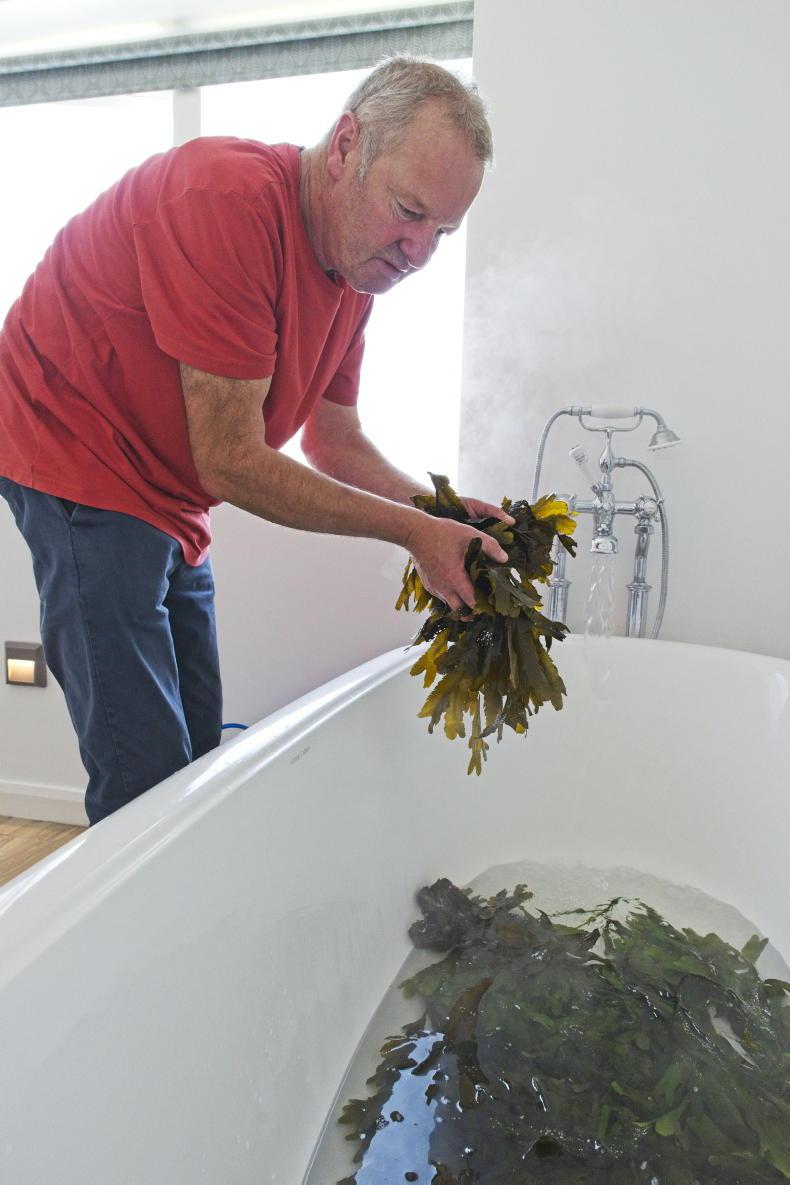
Paudie McDiarmada, Údaras na Gaeltachta, Harvesting and Preparing seaweed, \David Ruffles
Although islands, they are linked to the mainland by bridges. But Paudie explained: “Some sort of embarkation point to develop tourism in the region was required. So they [the co-op] decided that a seaweed centre would be appropriate. Seaweed is part of the culture here, part of the landscape here. It’s part of the history, it’s part of everything that happens really in the Islands going back centuries.” 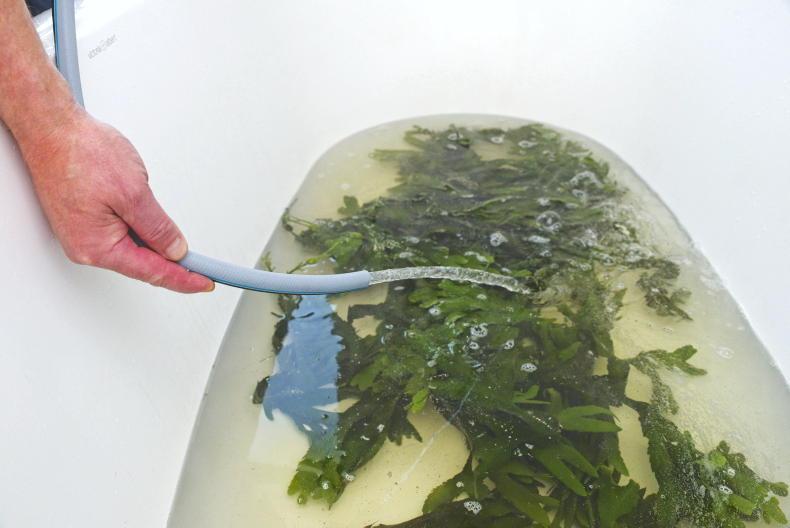
The heritage and seaweed centre was already built when Paudie started working on the project in 2019, but it was just the basics – information panels telling you about the seaweed, what it looks like, where it grows, and what you can do to eat it.
The seaweed baths are the latest addition. This is a move from the traditional use, which was in farming – as animal feed and fertiliser.
Cutting and harvesting of seaweed on the archipelago, on a commercial basis, started around the 1930s. There’s a processing plant in Cill Chiaráin (Kilkieran) that buys the seaweed off the cutters before sending it all over the world. “The local co-operative decided that to generate income, as an add-on to the seaweed centre we would start providing seaweed baths and treatments, which was a lovely marry-in with what we were trying to do anyway.”
The concept was born but when COVID-19 set in it was delayed by a year. It opened in July 2021.
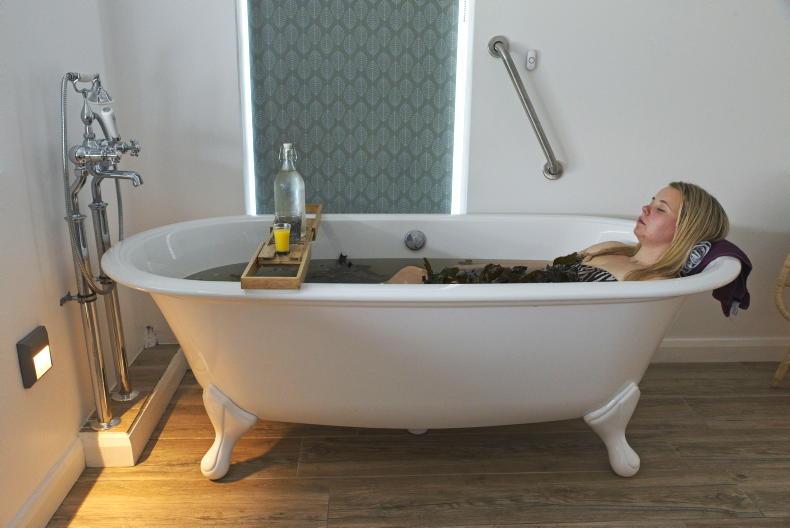
Priscilla Connolly taking a seaweed bath. \ David Ruffles
At the moment, the seaweed centre is looking to attract the local market: “If I can attract people from Carraroe, from Barna from Spiddal, from Galway city, Oranmore, and it works for them, it will work for everybody.”
Although currently predominantly day-trippers, Paudie hopes that this will change over time and COVID-19 has actually provided somewhat of a solution to a lack of accommodation options in the area.
“Due to COVID, the Gaeltacht schools, which was the money spinner, not only for Lettermullen but the entire Gaeltacht region, have been closed and the mná an tí in the area have diversified into Airbnb so compared to other years, there are quite a lot of bed nights available.”
Paudie is emphatic about the importance of “students and seaweed” to the area, saying “this was their money, anybody who says otherwise is lying. It was students and seaweed that put extensions on houses, built driveways, put cars on those driveways, televisions, beds, furniture, in every house in Connemara.”
While parked on the helipad on the Crappach – a private island owned by Val Folan – I look out over the wild Atlantic with the 12 Bens in the distance. This island is where Paudi, with permission (this is important) from Val, harvests the seaweed for the baths by hand daily.
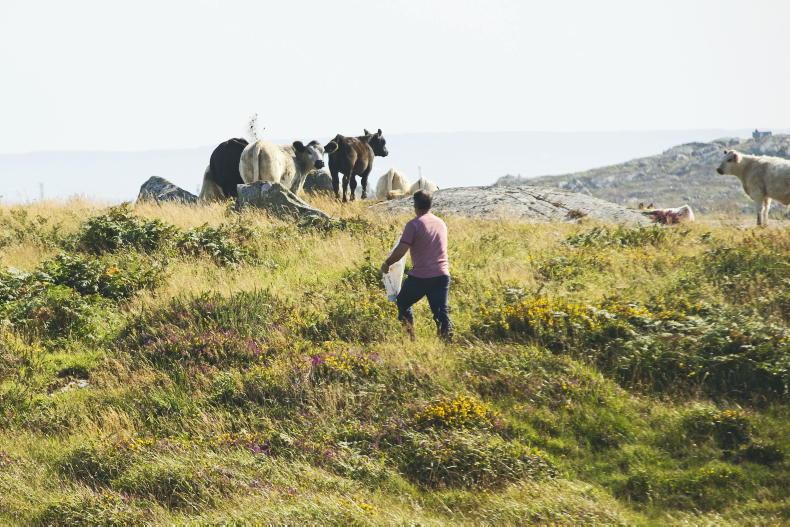
Connemara Farmer Val Folan tending to his herd of Galloway Cattle on his island off the Lettermullen peninsula, Co Galway. \ David Ruffles
In terms of harvesting, Paudie explains that you leave 4in of the stipe or the stem and that it grows again: “It’s amazing – since I started cutting the seaweed, I’ve noticed that the fronds that I cut the beginning of July last year, they’re starting to grow again. It’s regenerating fast.”
Val describes the waters as the cleanest in the world, with Paudie extolling the benefits.
“The seaweed used in the baths come from these waters, so you’re getting the seaweed with the most amount of nutrients and minerals in the world.
“When you scrub your skin with that, the benefits to your skin is off the charts with all the anti-inflammatory, anti-carcinogenic anti anti-diabetic properties.
Val explains his farming system: “This is an island, an SAC, it’s extensive farming, organic suckler Galloway beef.
“I did run Limousins and Charolais here for 20 years since I moved back from London but you couldn’t compete. Very few people actually bring cattle to beef here because you are basically on granite or bog. It’s either too hard or too soft and it’s very exposed to cold conditions and people are not into housing them over here. This is a 147ac island. There are no partitions, no parcels – it’s free-range over the whole place.
Although I feel that Val would talk about cattle forever, I ask: “So how did you end up getting involved in the seaweed?” His reply, while laughing, is directed to Paudie, “Yes Paudie, how did I get roped into that gig?”… “A sure I wanted to give back to the community I suppose.”
There is more to enjoy than just the seaweed baths. Water sports are also very much a part of the co-op’s development that preceded the seaweed centre.
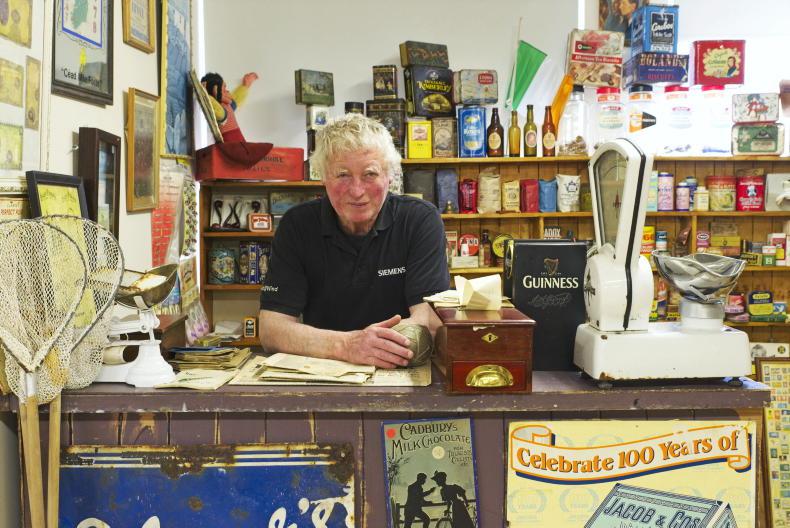
John Bhaba Jeaic Ó Conghaile and his collection at the Heritage Centre. \ David Ruffles
There is a heritage centre, Ionad Oidhreachta, over the seaweed centre.
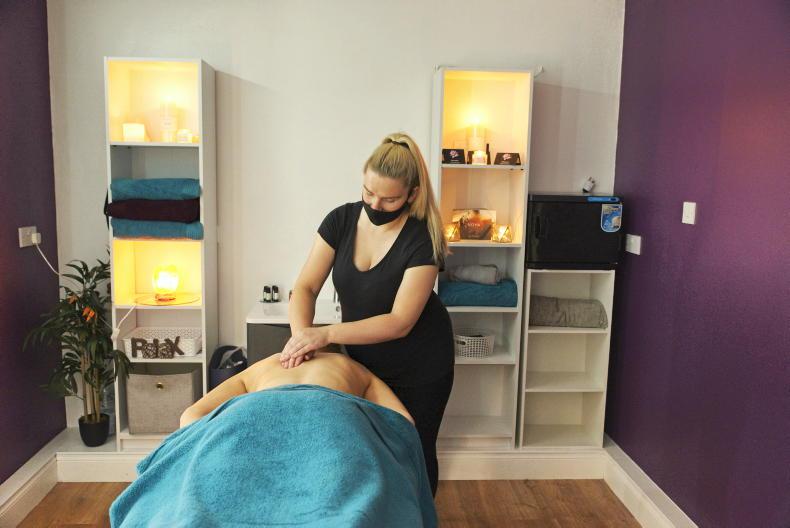
Cliona Flaherty massage therapist with Niamh Connolly of Suaimhneas. \ David Ruffles
Here is housed a private collection of historical, and some more recent, artefacts collected by John Bhaba Jeaic Ó Conghaile. Included in the collection is a photographic archive, newspapers, books, magazines and posters.
Most fascinating to our little group was the selection of tools on show. These tools spanned the crafts of forging, farming, carpentry and cooking.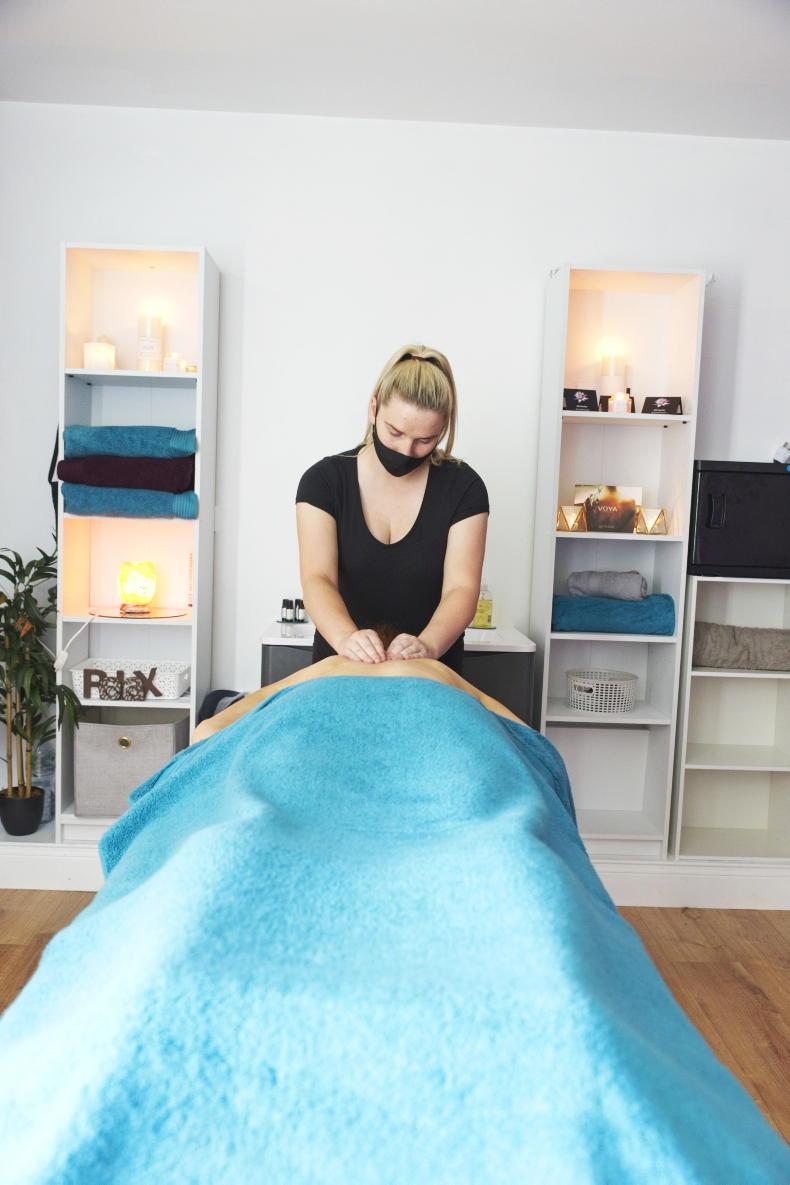
Cliona Flaherty is the therapist in the seaweed centre, offering a range of holistic treatments. I availed of a back massage before my bath and would highly recommend availing of all the facilities.
A local, Cliona worked in Delphi before setting up on her own and coming to work in the seaweed centre. After your treatment and before your bath, there is a steam room to enjoy. The baths themselves are spotless and you can genuinely feel the oil that is released from the fucus serratus penetrating your skin as you relax. Prices for baths and treatments is available on the website but start at €30 for a single bath.
Afterwards, we enjoyed the most exceptional seafood platter compiled by a local lady who has access to the freshest seafood given that her husband is a lobster fisherman. This can also be organised (book in advance) through the centre.
www.theseaweedcentre.com
In terms of funding, 80% came from flags (fisheries local action group) which Paudie explains is a subsidiary of An Bord Iascaigh Mhara (BIM), which looks after communities like Lettermullen that have been adversely affected by the disappearance of the fishing industry. Comhar Chuigéal Teo was founded in 1999 by the late Pól Báinín O Foighil for the Gaeltacht Island Community of Leitir Mealláin.
There are 280 shareholders from the community. It receives an operating grant from the Gaeltacht development agency Údarás na Gaeltachcta and the remainder of its funds are generated from operating commercial summer camps and a summer college, Coláiste Spleodar
www.spleodar.com
Cultural tourism is how Paudie Mac Diarmada says the Lettermullen Comhar Chuigéal (“the Co-op”) community development organisation wants its unique offering to be viewed.
Culture and the Irish language being the priority as would be expected in this Connemara Gaeltacht region.
Leitir Mealláin (Lettermullen) is one of the islands in a small cluster known as Ceantar na nOileán or “The Islands” in English.

Paudie McDiarmada, Údaras na Gaeltachta, Harvesting and Preparing seaweed, \David Ruffles
Although islands, they are linked to the mainland by bridges. But Paudie explained: “Some sort of embarkation point to develop tourism in the region was required. So they [the co-op] decided that a seaweed centre would be appropriate. Seaweed is part of the culture here, part of the landscape here. It’s part of the history, it’s part of everything that happens really in the Islands going back centuries.” 
The heritage and seaweed centre was already built when Paudie started working on the project in 2019, but it was just the basics – information panels telling you about the seaweed, what it looks like, where it grows, and what you can do to eat it.
The seaweed baths are the latest addition. This is a move from the traditional use, which was in farming – as animal feed and fertiliser.
Cutting and harvesting of seaweed on the archipelago, on a commercial basis, started around the 1930s. There’s a processing plant in Cill Chiaráin (Kilkieran) that buys the seaweed off the cutters before sending it all over the world. “The local co-operative decided that to generate income, as an add-on to the seaweed centre we would start providing seaweed baths and treatments, which was a lovely marry-in with what we were trying to do anyway.”
The concept was born but when COVID-19 set in it was delayed by a year. It opened in July 2021.

Priscilla Connolly taking a seaweed bath. \ David Ruffles
At the moment, the seaweed centre is looking to attract the local market: “If I can attract people from Carraroe, from Barna from Spiddal, from Galway city, Oranmore, and it works for them, it will work for everybody.”
Although currently predominantly day-trippers, Paudie hopes that this will change over time and COVID-19 has actually provided somewhat of a solution to a lack of accommodation options in the area.
“Due to COVID, the Gaeltacht schools, which was the money spinner, not only for Lettermullen but the entire Gaeltacht region, have been closed and the mná an tí in the area have diversified into Airbnb so compared to other years, there are quite a lot of bed nights available.”
Paudie is emphatic about the importance of “students and seaweed” to the area, saying “this was their money, anybody who says otherwise is lying. It was students and seaweed that put extensions on houses, built driveways, put cars on those driveways, televisions, beds, furniture, in every house in Connemara.”
While parked on the helipad on the Crappach – a private island owned by Val Folan – I look out over the wild Atlantic with the 12 Bens in the distance. This island is where Paudi, with permission (this is important) from Val, harvests the seaweed for the baths by hand daily.

Connemara Farmer Val Folan tending to his herd of Galloway Cattle on his island off the Lettermullen peninsula, Co Galway. \ David Ruffles
In terms of harvesting, Paudie explains that you leave 4in of the stipe or the stem and that it grows again: “It’s amazing – since I started cutting the seaweed, I’ve noticed that the fronds that I cut the beginning of July last year, they’re starting to grow again. It’s regenerating fast.”
Val describes the waters as the cleanest in the world, with Paudie extolling the benefits.
“The seaweed used in the baths come from these waters, so you’re getting the seaweed with the most amount of nutrients and minerals in the world.
“When you scrub your skin with that, the benefits to your skin is off the charts with all the anti-inflammatory, anti-carcinogenic anti anti-diabetic properties.
Val explains his farming system: “This is an island, an SAC, it’s extensive farming, organic suckler Galloway beef.
“I did run Limousins and Charolais here for 20 years since I moved back from London but you couldn’t compete. Very few people actually bring cattle to beef here because you are basically on granite or bog. It’s either too hard or too soft and it’s very exposed to cold conditions and people are not into housing them over here. This is a 147ac island. There are no partitions, no parcels – it’s free-range over the whole place.
Although I feel that Val would talk about cattle forever, I ask: “So how did you end up getting involved in the seaweed?” His reply, while laughing, is directed to Paudie, “Yes Paudie, how did I get roped into that gig?”… “A sure I wanted to give back to the community I suppose.”
There is more to enjoy than just the seaweed baths. Water sports are also very much a part of the co-op’s development that preceded the seaweed centre.

John Bhaba Jeaic Ó Conghaile and his collection at the Heritage Centre. \ David Ruffles
There is a heritage centre, Ionad Oidhreachta, over the seaweed centre.

Cliona Flaherty massage therapist with Niamh Connolly of Suaimhneas. \ David Ruffles
Here is housed a private collection of historical, and some more recent, artefacts collected by John Bhaba Jeaic Ó Conghaile. Included in the collection is a photographic archive, newspapers, books, magazines and posters.
Most fascinating to our little group was the selection of tools on show. These tools spanned the crafts of forging, farming, carpentry and cooking.
Cliona Flaherty is the therapist in the seaweed centre, offering a range of holistic treatments. I availed of a back massage before my bath and would highly recommend availing of all the facilities.
A local, Cliona worked in Delphi before setting up on her own and coming to work in the seaweed centre. After your treatment and before your bath, there is a steam room to enjoy. The baths themselves are spotless and you can genuinely feel the oil that is released from the fucus serratus penetrating your skin as you relax. Prices for baths and treatments is available on the website but start at €30 for a single bath.
Afterwards, we enjoyed the most exceptional seafood platter compiled by a local lady who has access to the freshest seafood given that her husband is a lobster fisherman. This can also be organised (book in advance) through the centre.
www.theseaweedcentre.com
In terms of funding, 80% came from flags (fisheries local action group) which Paudie explains is a subsidiary of An Bord Iascaigh Mhara (BIM), which looks after communities like Lettermullen that have been adversely affected by the disappearance of the fishing industry. Comhar Chuigéal Teo was founded in 1999 by the late Pól Báinín O Foighil for the Gaeltacht Island Community of Leitir Mealláin.
There are 280 shareholders from the community. It receives an operating grant from the Gaeltacht development agency Údarás na Gaeltachcta and the remainder of its funds are generated from operating commercial summer camps and a summer college, Coláiste Spleodar
www.spleodar.com












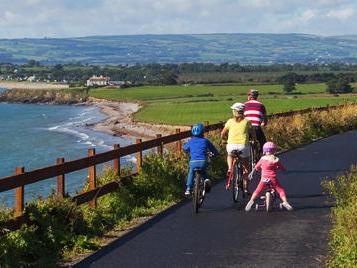
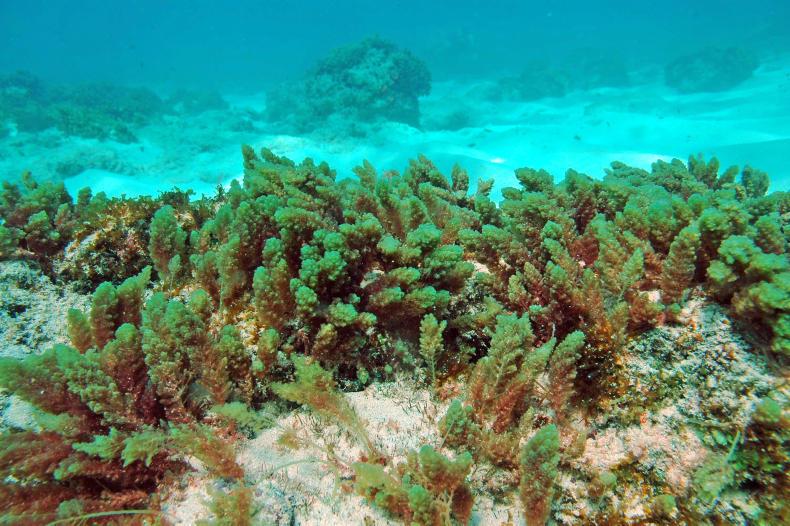

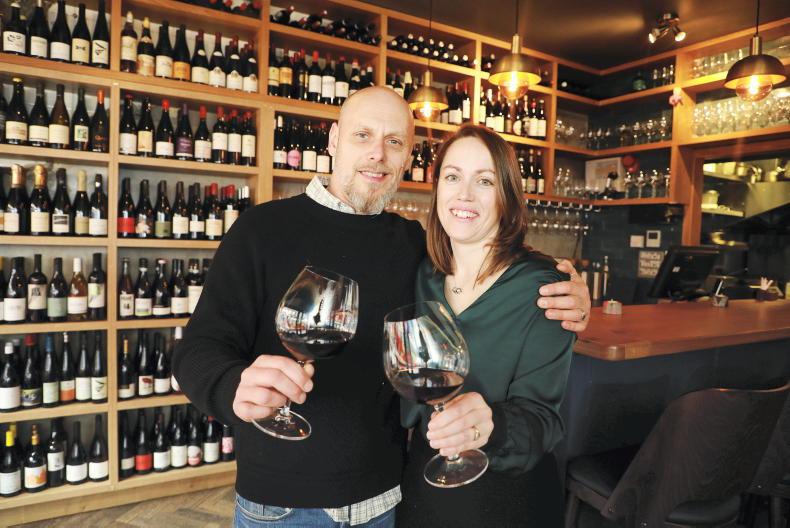
SHARING OPTIONS